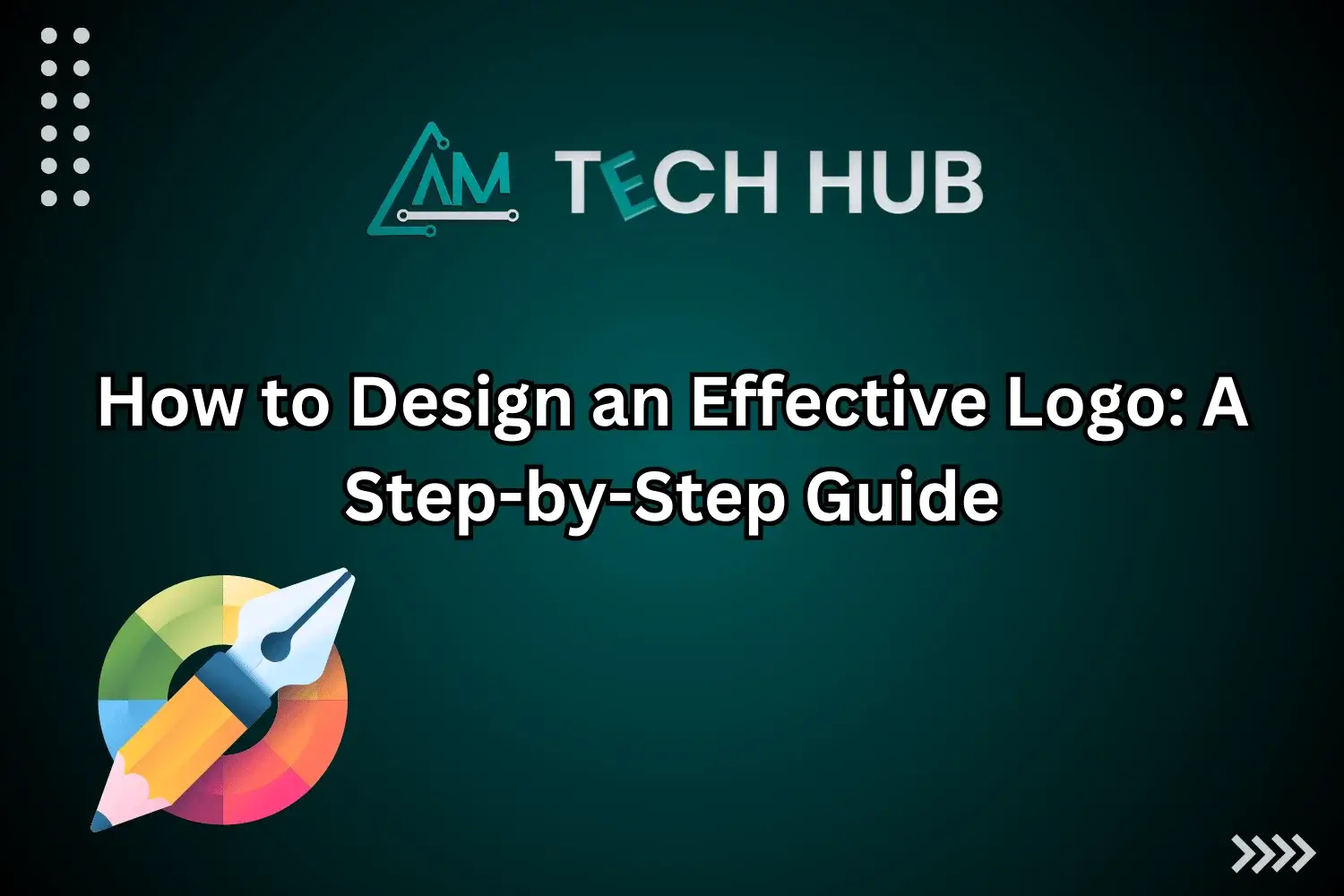If you have just started your business or aim to do so but are confused about which step should be taken first, then follow this article! The following article helps you better understand the steps needed to create an effective logo.
A logo is not merely a simple design. It is, in fact, the face or reflection of your brand or the services you offer. That is why it needs to be 100% appropriate and relevant to your business.
Logo design, a true reflection of your services and businesses, is a time-consuming process. However, an effective logo enables you to capture the attention of a wider audience. Whether you’re a startup or an established brand, designing an effective logo is crucial for long-term success.
Let’s have a look at the steps in designing an effective Logo that leaves a long-lasting impression on visitors. But before that, let me tell you about the best Logo designing software for a smooth and immersive experience in Logo designing.
Best Logo Designing Software
There are multiple Logo design software in the market. For an effective logo, you must choose the appropriate software to fulfil your needs. You don’t need to wander here and there because the following article helps you to choose the best Logo design software.
Have a look at the top 3 Logo Designing Software based on the user’s skill level!
Inkscape
If you have just started Graphic Designing, then you can look for Inkscape. Inkscape is the best Logo Design Software for beginners. It is an Open-source software (OSS). The OSS grants permission to its users to use the platform at their convenience.
Users can modify, use, and distribute the software with anyone for any purpose. There would be no copyright. It is the plus point of Inkscape compared to other software. Moreover, Inkscape offers you free access to its features. However, Inkscape lags for very high-resolution graphics.
For beginners, this software is easy, but for Intermediate and advanced users, the software could be problematic.

Gravit Designer
For an intermediate level, Gravit Designer is the best selection. Gravit Designer offers you unlimited tools and features to make a custom Logo Design. There is no free access to every feature. Users have to pay $99 for premium features.
Gravit Designer offers you a 30-day free trial experience. So, you can check out whether the software fits your Logo design journey.

Adobe Illustrator
Adobe Illustrator is by far the best choice for advanced users. Although the software is not free, it offers 14 days free trial. Users can easily operate the software in their logo-designing process. Adobe Illustrator is the best software for professional Graphic Designers.
Users have to purchase this software for $31.49 per month. Moreover, Adobe Illustrator does not provide Logo Templates, so you need to know your way.
Let’s start unfolding the steps for an effective Logo design!

Step 1: Understand the Purpose of your Logo
Before you begin sketching ideas, it’s essential to grasp why a logo matters. Your Logo is not the only thing to reflect your services, brands, or businesses. There are other things like Website development, Content coverage, marketing, etc.
But a logo design is the first impression of your services to your targeted audience. As we believe, the first impression is the last. That is why it must be good.
A good logo creates Brand Identity (Visual illustration of your brand), establishes Brand recognition (enhances visibility and recognition for easy identification and remembrance of your brand), and communicates values and industry (explicit representation of your brand’s, service’s or business’s values and agenda)
In essence, a logo is the heart of your brand’s visual identity.
Step 2: Research Your Targeted Audience and Competitors
Designing a logo that resonates with your target audience requires an understanding of who they are and what appeals to them. You have to know about your target audience, their expectations, preferences and the latest trends in the market.
Simultaneously, research your competitors. Analysing their logos will give you insight into what works and what doesn’t within your industry.
It helps you to stand out in the industry and ensures that your design is relevant to the latest trends prevailing in the market.
You do not need to imitate your competitors; you need to notice common colours, styles, and symbols used in the market.
Step 3: Brainstorm your Brand’s vision
Brainstorm your ideas and make a mind map after doing thorough research on your competitor’s style. Make it assured that your ideas are in alignment with your brand’s personality and values. Take time to consider the tone/ style (traditional, luxurious, or modern), message, or colours of your brand.
By defining these elements, you ensure your logo speaks directly to your audience and communicates your brand’s core message.
Step 4: Choose the Right Type of Logo
After brainstorming or aligning your ideas, the next step is to choose the right type of Logo. There are several types of logos, and selecting the right one for your brand is critical. The main types are:
Wordmark
This logo consists of the brand’s name in a custom font. It is ideal for brands with unique, catchy names (e.g., Coca-Cola).
Lettermark:
It uses initials or a letter of the brand (e.g., IBM, HBO). It is ideal for companies with lengthy names or where acronyms are recognizable.
Pictorial Mark:
A symbol or graphic represents the brand (e.g., Apple, Twitter). It is perfect for established brands with strong recognition.
Abstract Mark:
It is an abstract shape or design that represents your brand’s values or services (e.g., Nike’s swoosh). It gives flexibility and uniqueness.
Mascot Logo
It features a character or illustration representing the brand. It is often used by family-friendly or playful businesses (e.g., KFC’s Colonel).
Combination Mark
It combines a symbol with a wordmark or lettermark, giving versatility and immediate recognition (e.g., Adidas).
Emblem
In this type of logo, text is displayed within a symbol or icon (e.g., Starbucks). It is often traditional. These logos convey a sense of history or authority.
Step 5: Select Your Colour Palette
Colours play a powerful role in logo design because they evoke emotions and tell a story. Colours attract a wider audience and enhance the brand’s recognizability.
That is why choose a palette that aligns with your brand values.
Web colours are the digital representation of an array of colours used to convey a range of messages like Red for passion, excitement, and energy, Blue for trust, professionalism, and calm, Green for growth, nature, and eco-friendliness, and Yellow for optimism, warmth, and cheerfulness.
For Logo designing, the colour palette is divided into three categories; Black and White Logos, Monochrome Logos, and Colour Combination Logos.
- For a sleek minimalist or a classic style, use black and white style logos.
- To strengthen your brand, use Monochrome Logos. In this type, a single colour is enough to give a powerful impact.
- In a Colour Combination Logo, two or more than two colours are mixed to give a powerful strike to your Logo. For example, Maroon and Peach give you an elegant look while Yellow and Blue show playfulness and authoritativeness.
Step 6: Choose the Right Typography
Typography is as important as the symbol itself. Choose fonts that complement your brand’s personality i.e Serif fonts to convey tradition, respectability, and authority.
Sans-serif fonts offer a clean, modern, and minimal look while Script fonts impart elegance, creativity, or playfulness. They should be used carefully to avoid legibility issues.
Note: Typography should not overpower the design. It must enhance readability and be scalable, whether displayed on a mobile screen or a billboard.
Step 7: Refine and Choose the Best Concept
After brainstorming several ideas, it’s time to refine them. A best Logo Designer focuses on simplicity and clarity.
Here are a few things to keep in mind during refinement:
- Make sure that your design is balanced and visually pleasing.
- Your logo should look great in any size, from a social media profile picture to a billboard.
- Make sure that your Logo design is not outdated. It must be according to the latest trend.
- Your Design should not be an imitation. Rather it should be unique. Uniqueness is key to standing out.
Note: Test different variations of the logo with and without colour, in different formats, and in different settings to see how well it holds up.
Step 8: Finalise and Digitise Your Design
Once you’ve selected a final design, it’s time to create a digital version. Use graphic design software like Adobe Illustrator or CorelDRAW to bring your sketch to life.
These programs allow you to refine shapes, adjust colours, and create a high-resolution, scalable vector file that can be used in any medium.
Step 9: Get Feedback and Make Adjustments
Once you’ve created a digital version, seek feedback. Show your logo to colleagues, friends, or even potential customers. Ask them whether your logo aligns with the brand’s message, does it stand out from competitors or Is it easily recognizable?
Based on feedback, make any necessary tweaks and refinements. This is a critical step to ensure your logo resonates with your target audience.
Step 10: Launch and Protect Your Logo
Once you’re satisfied with the final design, it’s time to launch it across your branding materials i.e. website, social media profiles, business cards, and more.
To protect your intellectual property, consider trademarking your logo to prevent others from using it.
Conclusion
To conclude, designing an effective logo is a thoughtful process that requires research, creativity, and refinement. A great logo doesn’t just look good; it represents your brand’s identity, connects with your audience, and stands the test of time.
By following these steps, you can create a logo that makes a lasting impact and sets the foundation for your brand’s success.



